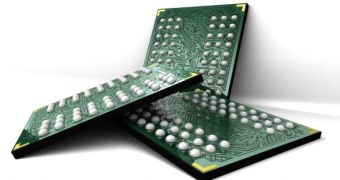Contrary to expert opinions about the DRAM markets being oversaturated, Formosa Advanced Technologies executives announced their decision of opening a third DRAM plant. The action comes as a response to the demands of the company's partners Nanya Technology and Inotera Memories.
The memory industry environment has reached a point of saturation where the average selling prices do not cover even the manufacturing price, which leads to severe profit loss. Yet, according to the declarations of Wen-Yuan Wong, CEO of Formosa Advanced Technologies, the current manufacturing units are unable to deliver the necessary amount of DRAM backend production demand.
While operating at full power with their two plants, Formosa Advanced Technologies faced a bottleneck in supply and demand from Nanya Technology and Inotera Memories, as the backend supplyers switched to a 70nm processing node during the second half of 2007. Shortly, Nanya is producing more than Wong's company can process at the actual level of expansion.
The third manufacturing unit has already been built up, while equipment installation should be completed by the end of the year. Wong further detailed that production is estimated to begin in the first quarter of the next year, but it would take more than another year until the unit would reach its maximum processing capacity. Formosa's first plant is the only to work at full capacity, and the second is expected to reach processing maturity in the late 2008.
Formosa Advanced Technologies also considers approaching the microSD sector, while multi-chip packaging (MCP), stack-die packaging, system-in-package (SiP) and flip-chip (FC) packaging are already among the company's priorities.
Even though the current DRAM offer on the market is way higher than the demand, general manager Shih-Ming Hsie affirms that the selling expectancy for the next year will grow by more than 30% in 2008, which translates in an average profit of NT$12 billion.

 14 DAY TRIAL //
14 DAY TRIAL //